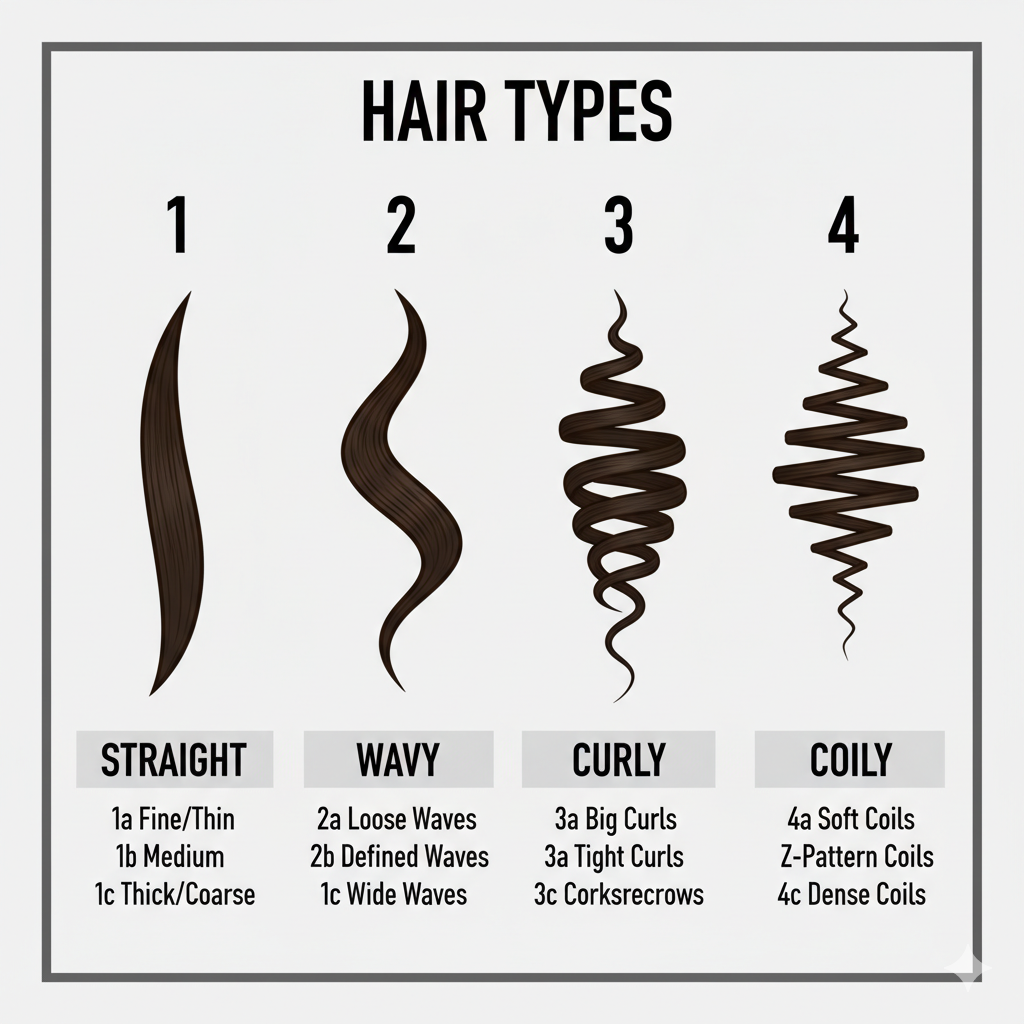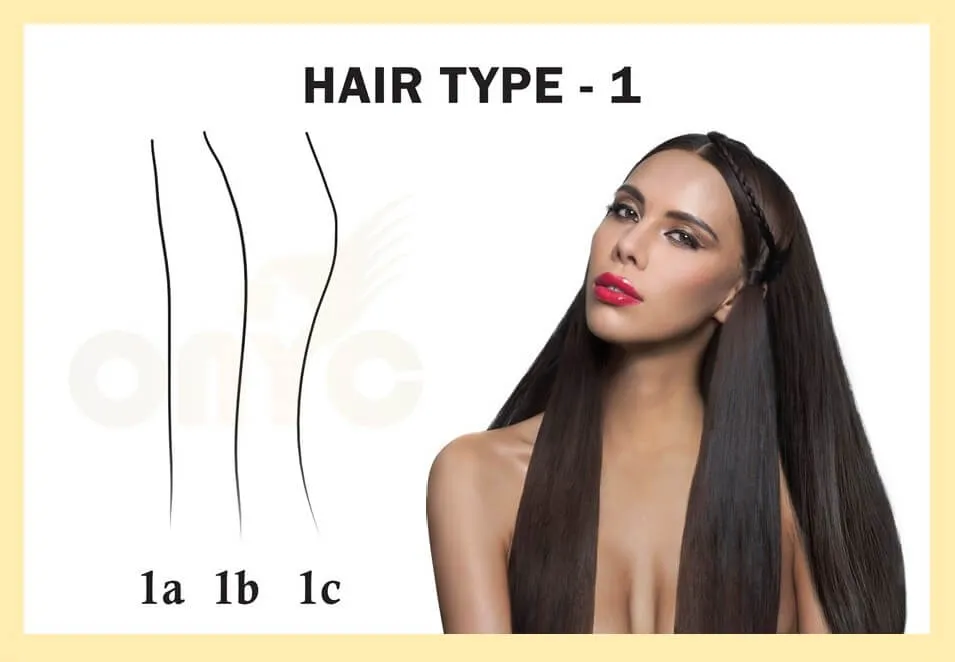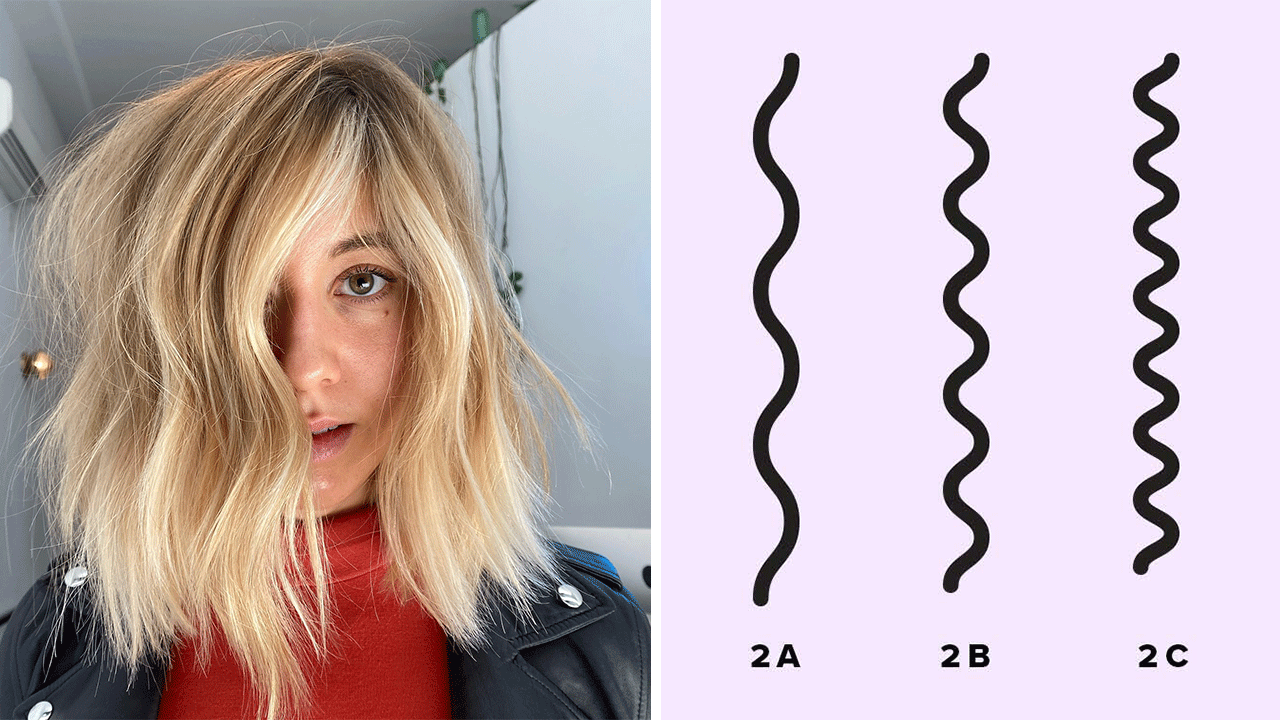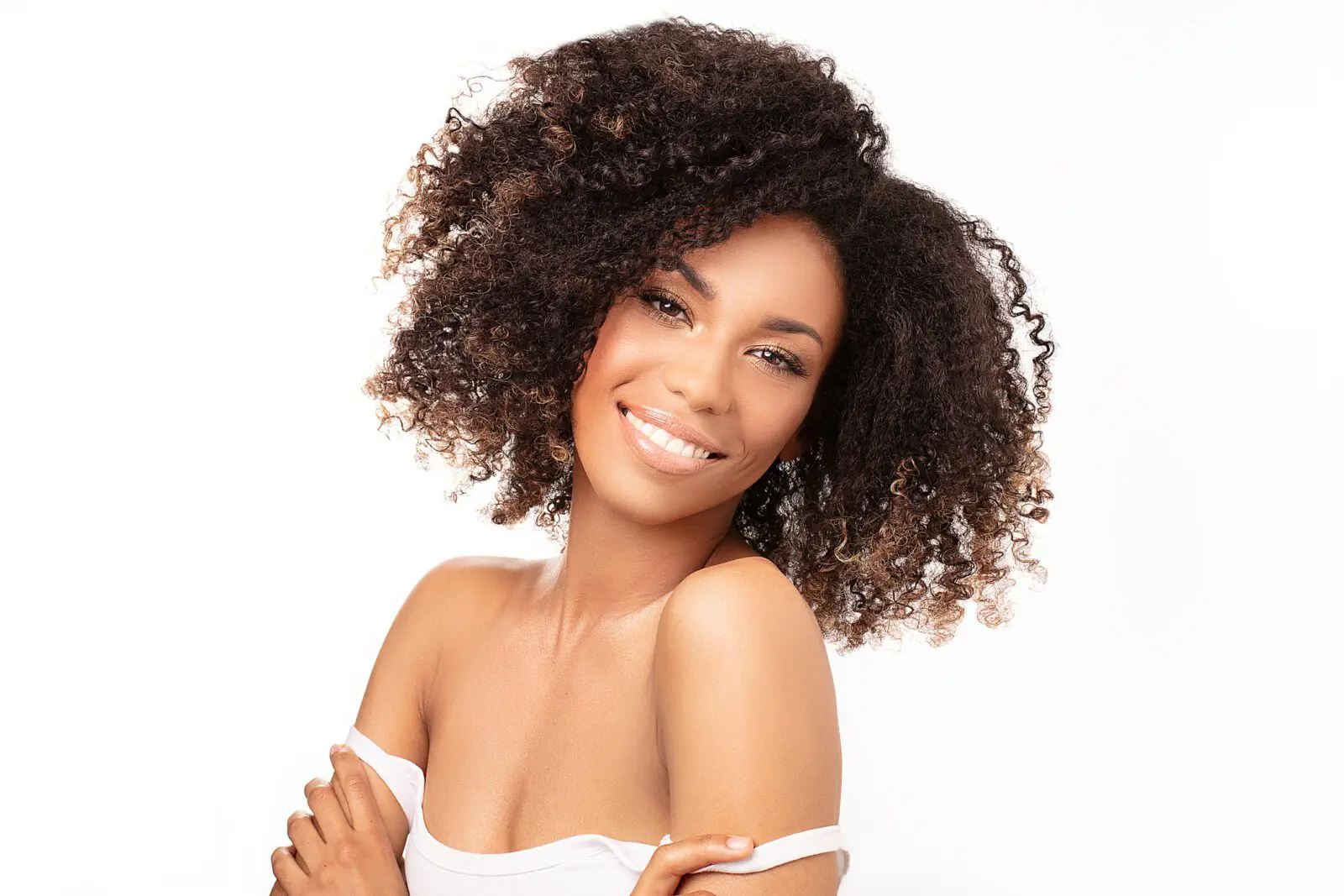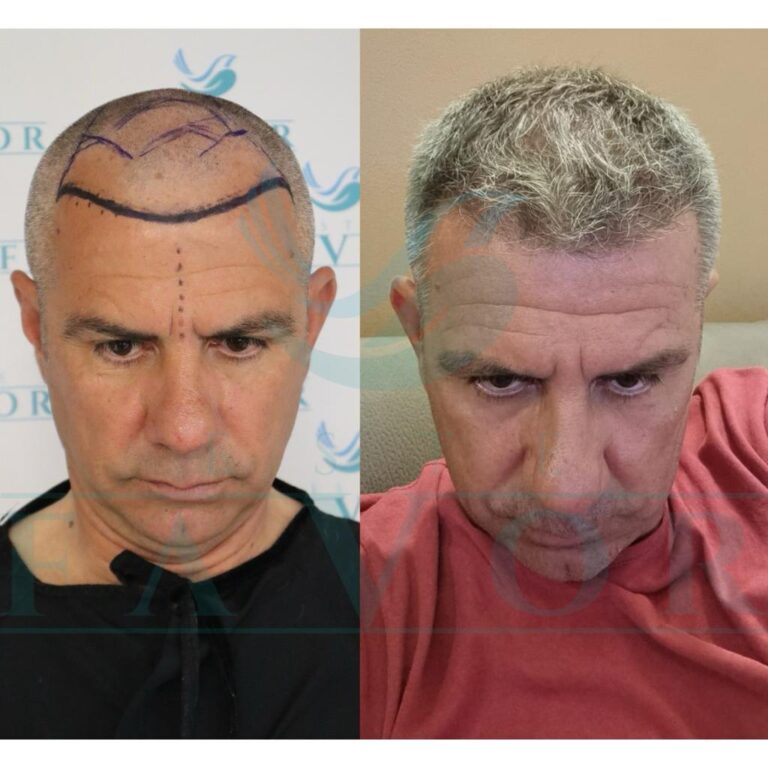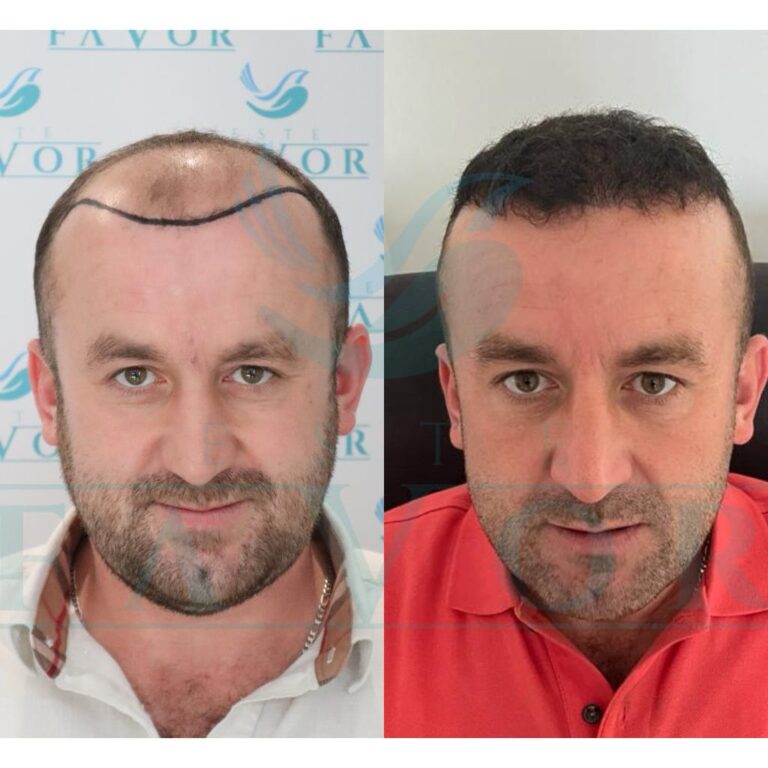Walk into any salon, and you’ll probably hear stylists mention terms like “2C waves” or “4B coils” as if everyone knows what they mean. Yet many people leave still unsure where their own hair types fit—straight, wavy, curly, or coily. This confusion leads to using the wrong products, following mismatched routines, and wondering why your hair resists every effort to behave.
Table Of Contents - Sayfa İçeriği
ToggleHere’s the truth: identifying your hair type goes far beyond curl pattern. It’s about understanding how hair texture, density, and porosity interact to define your hair’s unique behavior. Once you recognize these factors, everything—from product choice to styling techniques—starts to make sense.
This comprehensive guide breaks down the complete hair type classification system, explaining all twelve variations across straight, wavy, curly, and coily hair types. You’ll learn how to build an effective care routine, protect your natural texture, and address common challenges like frizz and breakage. Finally, we’ll explore how modern hair restoration in Turkey, particularly through advanced hair transplant clinics in Istanbul, provides affordable, natural-looking solutions when hair loss alters your natural pattern.
Hair Classification Decoded: The System Behind the Numbers
Imagine trying to describe every possible car model using just four categories. That’s essentially what the hair types classification system does—it groups infinite variations into manageable classifications. Understanding hair types begins with recognizing how hair follicles shape determines everything about your natural hair texture. The system assigns numbers 1 through 4 based on curl tightness: think of 1 as a perfectly straight line and 4 as a tightly compressed spring. Letters A, B, and C within each number indicate texture variations in hair types, creating twelve distinct categories that capture most hair patterns you’ll encounter.
This hair types framework emerged from practical styling needs rather than scientific research. Hairstylists needed common terminology to discuss hair characteristics with clients and colleagues. While not perfect—no system can capture every nuance of different hair types—it provides a useful starting point for understanding your hair’s natural tendencies. The real magic happens when you stop trying to force your hair into one rigid category and instead recognize that most heads display multiple hair types simultaneously. Your crown might show different hair texture characteristics than your nape, and recognizing these variations in hair types is completely normal and affects how you should approach hair care for different sections.
Type 1 Hair: The Straight Spectrum Explored
When hair follicles form perfect circles beneath your scalp, they produce strands that emerge straight without deviation. Understanding Type 1 hair types is essential because this cylindrical follicle shape creates hair that reflects light uniformly, explaining the distinctive shine straight hair types display. However, that same structure creates challenges—everything from styling frustrations to how quickly your hair appears greasy. Among all hair types, straight hair shows the fastest oil distribution from scalp to ends, which is why proper hair care routines for Type 1 hair types must address oil control and volume creation.
Type 1A: Ultra-Fine Straight Strands
Picture spun silk stretched taut—that’s Type 1A hair, representing the least common texture you’ll find. These extraordinarily delicate filaments resist every attempt at manipulation, springing back to perfectly straight within minutes of any styling effort. The microscopic diameter of individual strands means they lack the structural integrity thicker hair possesses, making them vulnerable to breakage from activities that wouldn’t faze coarser textures.
This delicacy demands a minimalist approach. Heavy conditioning creates immediate greasiness; aggressive brushing causes snapping; heat styling inflicts disproportionate damage. Success with Type 1A requires accepting its limitations while working strategically within them. Powder-based dry shampoos absorb excess oil without adding weight. Texturizing mists create temporary grip for updos. Cool air drying prevents heat damage while maintaining whatever subtle body exists naturally. The goal isn’t transformation—it’s enhancement of what’s already there.
Type 1B: The Middle Ground
Step up slightly in diameter, and you reach Type 1B hair—the straight hair most people possess. These strands maintain their linear growth pattern while offering marginally more substance and resilience than 1A. The increased width provides better structural integrity, meaning styling holds slightly longer and breakage occurs less readily with normal handling.
The advantage of Type 1B lies in its adaptability. You can achieve sleek straight looks with minimal effort while also coaxing temporary waves through braiding or heat styling. Products that would overwhelm Type 1A work reasonably well here, though you still need restraint compared to textured hair types. The key is recognizing you’re working with a blank canvas that accepts direction but won’t maintain extreme styles indefinitely.
Type 1C: Textured Straight Hair
At the coarsest end of the straight spectrum sits Type 1C hair, featuring substantially thicker individual strands that pack together densely. While maintaining an overall straight trajectory, these strands sometimes display subtle bends, particularly in humid conditions or at longer lengths. The robust diameter creates hair that feels substantial when touched and appears notably full even before styling.
This thickness provides resistance to damage but introduces new challenges. Humidity causes individual strands to swell, creating frizz as they separate from their neighbors. The weight of abundant hair can make roots appear flat by contrast. Static electricity in dry climates creates flyaways that are difficult to control. Managing Type 1C successfully means embracing smoothing products that control frizz, incorporating regular protein treatments to maintain strand integrity, and using ionic tools that minimize static during styling.
Type 2 Hair: Decoding the Wave Zone
Between perfectly straight and definitively curly exists Type 2—hair that bends into S-shaped curves without completing full rotations. Understanding wavy hair types is crucial because this intermediate texture results from follicles with slightly flattened oval cross-sections rather than perfect circles. The degree of flattening determines wave tightness in these hair types, with more compressed ovals producing tighter S-patterns. When comparing different hair types, Type 2 offers remarkable styling versatility but requires specific knowledge about managing hair porosity and controlling frizz that affects wavy hair types more than straight hair types.
Type 2A: Gentle Undulations
Type 2A waves announce themselves tentatively, appearing primarily in the lower third of hair length while roots remain relatively flat. These subtle movements create just enough texture to prevent calling the hair straight, yet not enough definition to clearly claim wavy status. The fine to medium strand diameter means these waves lack resilience—they succumb easily to gravity, humidity, and product weight.
Working successfully with Type 2A hair means enhancing rather than forcing. Salt-based sprays encourage natural bends by creating texture that allows strands to grip each other. Applying products to thoroughly saturated hair prevents uneven distribution that creates sticky sections. Scrunching upward while drying encourages wave formation by shortening the hair’s effective length temporarily, allowing bends to set in place. The moment you brush through or add heavy products, waves disappear—so timing and product selection become critical.
Type 2B: Prominent S-Shapes
Increase the follicle compression slightly, and Type 2B hair emerges—waves with conviction that begin forming closer to the scalp. These S-shapes maintain their structure throughout the day with appropriate support, creating noticeable texture and natural volume. The medium strand thickness provides enough substance that waves don’t collapse under their own weight, yet remains fine enough to avoid excessive bulk.
Type 2B occupies an enviable position between extremes. You can straighten these waves relatively easily when desired while also enhancing them into more pronounced curls through styling. The texture accepts various product types without extreme reactions—gels provide hold without excessive stiffness, creams define without greasiness, and mousses volumize without crunchiness when applied correctly. The challenge lies in preventing frizz, which this texture invites readily due to its partially raised cuticle structure.
Type 2C: The Curl Boundary
Approach the border between wavy and curly, and you encounter Type 2C hair—tight S-waves interspersed with occasional spiral curls. The coarse texture and dense packing create substantial volume that can feel excessive without proper management. These waves begin at the scalp, providing lift and body that requires no enhancement, only direction and control.
Think of Type 2C as curly hair’s cousin—many techniques that work for Type 3 curls translate effectively here. The squish-to-condish method (repeatedly squeezing conditioner and water into hair sections) provides the intensive hydration these waves need. Strong-hold gels become necessary rather than optional, as only substantial hold prevents frizz from overtaking definition. Diffusing or air-drying completely before touching hair preserves wave clumps; premature manipulation creates frizz and separates waves into undefined fluff.
Type 3 Hair: True Curl Territory
Cross into Type 3 hair, and ambiguity disappears—these are unmistakable curls that loop back on themselves, creating spirals ranging from loose ringlets to tight corkscrews. Among all hair types, Type 3 curly hair types showcase the most defined curl patterns that require specialized hair care routines. Follicles here display pronounced elliptical shapes that guide hair growth in continuous curves rather than simple bends. This structure creates the signature curl bounce and spring that defines Type 3 hair types, making them distinctly different from both wavy hair types and coily hair types.
The curving hair shaft in curly hair types presents inherent challenges related to hair health and moisture retention. Cuticle scales along the outside of curves lift slightly, creating pathways for moisture loss while simultaneously preventing natural scalp oils from gliding down curved surfaces efficiently. This double vulnerability makes Type 3 hair types perpetually thirsty for hydration and prone to dryness-related issues like frizz, brittleness, and breakage—challenges that require understanding your specific hair porosity level and implementing appropriate hair care products designed for curly hair types.
Type 3A: Voluminous Loose Curls
Imagine wrapping hair around something the width of your thumb—that’s the diameter of Type 3A curls. These generous spirals create romantic volume with minimal effort, displaying natural definition that doesn’t require extensive product manipulation. When you pull these curls straight and release them, they bounce back enthusiastically, demonstrating the elastic energy stored within their structure. Individual strands remain relatively lightweight due to fine to medium thickness, preventing the heavy clumping that tighter curl patterns sometimes create.
The looser spiral configuration presents specific maintenance considerations. Extended surface area along each curl’s length means more exposure to atmospheric moisture, creating vulnerability to humidity-induced frizz. As hair grows longer, weight accumulates at the ends while roots remain relatively flat, potentially creating triangular silhouettes. Strategic solutions include precision layering that redistributes weight, featherweight curl enhancers that define without adding heaviness, and protective sleep methods that maintain curl integrity overnight without crushing or stretching spirals.
Type 3B: Medium Springy Coils
Contract those spirals to approximately ballpoint pen diameter, and Type 3B hair emerges—curls radiating vibrant energy and substantial presence. These compressed ringlets stack closely together, generating impressive fullness that commands attention. Stretch one of these curls and watch it retract instantly—that immediate recoil reveals the tensile strength characteristic of this pattern. The medium strand diameter provides structural stability, creating curls that maintain their shape reliably throughout daily activities.
This density introduces particular grooming challenges requiring methodical approaches. Curls at this tightness interweave readily, forming tangles that resist casual separation attempts. Attempting detanglement on dry hair invites breakage; the safe protocol involves thoroughly saturating strands with rich conditioner, then methodically working through snarls from tips progressing toward roots using either fingertips or wide-spaced combs. Hasty approaches inevitably produce severed strands and emotional frustration.
Hydration preservation becomes mandatory rather than optional for Type 3B maintenance. Seven-day deep conditioning cycles aren’t indulgent pampering—they’re preventive maintenance forestalling the brittleness that precedes breakage. Seek formulations containing penetrating agents like raw honey, avocado extract, or hydrolyzed protein molecules that genuinely enter hair shafts rather than merely coating external surfaces.
Type 3C: Tight Pencil Coils
At Type 3’s most compressed extreme exists 3C—pencil-diameter curls that pack together generating maximum spatial volume. These curls frequently intermingle with Type 4 coils within single heads, blurring categorical boundaries. The pairing of fine to medium strand width with extraordinarily tight circumference generates hair appearing abundantly dense despite individual filaments being comparatively fragile.
This fragility-despite-fullness paradox defines Type 3C maintenance requirements. Sharp angular points where compressed curls bend represent stress concentrations vulnerable to fracture under manipulation. Protective styling approaches—twist-outs, braid-outs, or minimal-manipulation updos—preserve hair health by reducing daily handling frequency. When wearing hair loose, gentle handling and avoiding excessive combing or brushing prevents curl clump disruption while minimizing stress at vulnerable bend locations.
Product stratification becomes critical: water-based leave-ins deliver foundational hydration, curl creams contribute slip and definition, oils create moisture-sealing barriers inside hair shafts, and gels provide hold while controlling frizz. This multi-tier approach addresses hydration needs at several levels simultaneously, generating curls maintaining moisture and definition spanning multiple days between washing sessions.
Type 4 Hair: The Coily Kingdom
Beyond curls lie coils—Type 4 hair characterized by Z-shaped zigzags or extremely tight spirals rather than smooth curves. Often labeled “kinky,” this hair pattern showcases remarkable styling versatility despite structural fragility. The sharply angled growth pattern creates dramatic shrinkage, with hair often appearing 75% shorter dry than its actual stretched length.
Type 4 hair’s unique challenges stem from its structure. Those sharp zigzag angles prevent natural scalp oils from traveling along the hair shaft, creating chronically dry hair that requires external moisture sources. The flattened, ribbon-like cross-section of Type 4 strands (versus the rounder cross-section in straight hair) concentrates stress at bend points, making these areas prone to breaking.
Type 4A: Soft Defined Coils
Type 4A forms tight coils roughly matching a crochet needle’s circumference when stretched. These coils display clear S-curl patterns that clump naturally, creating defined texture without styling. Among Type 4 patterns, 4A retains moisture most effectively and shows the most pronounced curl definition, making it relatively easier to maintain than tighter coil patterns.
The LOC (Liquid-Oil-Cream) or LCO (Liquid-Cream-Oil) method provides effective moisture retention for Type 4A. Start by saturating hair with water or water-based leave-in conditioner, then seal with oil or cream depending on your chosen method sequence. This layering technique traps moisture within the hair shaft rather than allowing it to evaporate, addressing Type 4A’s persistent dryness.
Protective styling extends beyond aesthetics for Type 4A—it’s health maintenance. Box braids, two-strand twists, or crochet installations give hair extended breaks from daily manipulation while maintaining length. When wearing natural styles, embrace shrinkage as a sign of healthy hair rather than something requiring correction through heat or excessive stretching that stresses strands.
Type 4B: Angular Zigzag Texture
Shift from smooth coils to sharp-angled zigzags, and you’ve entered Type 4B territory. Instead of forming rounded curves, Type 4B hair creates distinct Z-patterns with sharp bends resembling folded accordion pleats. These zigzags pack extremely tightly, creating dense texture without obvious curl definition when dry. The cotton-like appearance when dry transforms dramatically with proper moisturizing into soft, defined texture.
Shrinkage intensifies with Type 4B, often hiding 70-75% of actual length. This makes stretched styles important for both showcasing length and facilitating easier detangling. Banding (wrapping hair sections with elastic bands from roots to ends), threading (wrapping sections with thread), or braiding before bed keeps hair stretched overnight, reducing tangling while allowing you to wake up to more manageable hair requiring less manipulation.
Ingredients providing natural slip become crucial for Type 4B care. Marshmallow root, slippery elm, and flaxseed gel create slippery textures that help fingers or combs glide through hair during detangling, reducing the pulling and tugging that causes breakage. Seek out conditioners and stylers featuring these botanical extracts for gentler detangling experiences.
Type 4C: Maximum Coil Density
Type 4C represents the tightest coil pattern, featuring extremely compressed zigzags with minimal visible curl definition when dry. These ultra-tight formations create hair appearing cloud-like in texture, shrinking dramatically—sometimes 75% or more—from stretched to natural state. The strand structure contains fewer protective cuticle layers than other hair types, creating simultaneously the most fragile and most versatile styling canvas.
Managing Type 4C successfully demands extreme gentleness and intensive moisture commitment. Pre-poo treatments (applying oil or conditioner before shampooing) protect hair during cleansing, preventing the complete moisture stripping that leads to brittleness. Sulfate-free shampoos or cleansing conditioners remove buildup without harsh detergent action. Deep conditioning after every wash isn’t optional—it’s mandatory maintenance preventing the dryness-induced breakage that plagues improperly cared-for Type 4C hair.
The styling possibilities with Type 4C are genuinely limitless—afros, twist-outs, braid-outs, bantu knots, updos, and more. The key involves maintaining proper moisture and minimizing manipulation between styles. Many Type 4C individuals embrace protective styling as standard practice, installing long-lasting braids or twists that allow hair to rest and grow without daily styling stress.
Additional Factors: Beyond Basic Classification
While numbered categories provide useful frameworks, several other characteristics profoundly impact how your hair behaves and what it needs.
Porosity: Your Hair’s Hydration Highway
Porosity measures how readily your hair absorbs and retains moisture—essentially rating your hair’s hydration efficiency. Low porosity hair features tightly sealed cuticles resisting moisture penetration. Water beads on the surface rather than absorbing quickly. This hair needs heat during deep conditioning to temporarily open cuticles, but once moisturized, it retains hydration well.
High porosity hair displays raised or damaged cuticles with gaps allowing moisture to enter freely but escape just as easily. This creates frustrating cycles where hair feels dry shortly after moisturizing. High porosity hair benefits from protein treatments temporarily filling cuticle gaps, plus heavy sealants like butters and thick oils that trap moisture inside.
Test your porosity by dropping a clean, shed strand into water. Floating indicates low porosity; immediate sinking suggests high porosity; hovering mid-level means normal porosity—the easiest to maintain since products absorb appropriately and moisture retention balances naturally.
Density: Counting Your Strands
Density quantifies how many individual hair strands emerge from each square inch of scalp—measuring quantity rather than quality. High density means abundant hair taking forever to dry and requiring substantial product amounts to coat every strand. Low density means fewer total hairs, creating thinner coverage even when individual strands are thick.
Understanding density sets realistic expectations. Low density hair looks best in styles creating fullness illusions—strategic layers, volume-enhancing products, and highlighting techniques that add dimension. High density hair handles heavy products and elaborate styles without appearing weighed down but requires extended styling and drying time.
Individual Strand Diameter
Each hair strand possesses its own width, classified as fine, medium, or coarse. Fine strands feel nearly invisible between your fingers; coarse strands register as distinctly present and substantial. This operates independently from density—you can have abundant fine hairs (high density, fine strands) or sparse thick hairs (low density, coarse strands).
Fine hair requires lightweight products preventing greasiness or flatness, regardless of curl pattern. Coarse hair handles richer, heavier formulations without becoming weighted down. Medium strands offer maximum flexibility, tolerating wide product ranges without problems.
Building Your Custom Hair Strategy
Armed with comprehensive hair type knowledge, you can construct routines that actually work rather than following generic advice unsuited to your needs.
Identify your primary frustrations: Does frizz dominate your life? Do you struggle achieving volume? Is persistent dryness your nemesis? Does greasiness appear within hours? Each complaint points toward specific product categories and techniques. Frizz requires smoothing formulations and moisture; volume needs lightweight texturizers; dryness demands rich conditioning; greasiness benefits from clarifying routines and minimal product application.
Experiment systematically rather than randomly. Change one variable at a time—test a new shampoo for two full weeks before judging effectiveness. Add products gradually rather than overhauling everything simultaneously, which makes isolating helpful versus problematic products impossible.
Study ingredient lists beyond marketing claims. Sulfates cleanse aggressively, making them problematic for dry hair but potentially beneficial for extremely oily scalps. Silicones provide smoothness and heat protection but can accumulate, requiring periodic clarifying. Proteins strengthen damaged hair but can create stiffness when overused on healthy hair. Understanding these trade-offs enables informed product selections.
When Hair Loss Disrupts Natural Patterns
While most of this guide addresses caring for existing hair, many people confront hair loss affecting confidence regardless of original hair type. Thinning, receding hairlines, and bald patches impact people across all textures from straight through coily.
Hair loss challenges vary by type. Straight hair makes thinning immediately visible since there’s no curl pattern creating volume or camouflaging gaps. Curly and coily hair provides more coverage through natural volume, but often experiences breakage compounding natural thinning. The psychological impact remains consistent—losing hair affects self-perception and confidence profoundly.
Modern medical technology offers genuine hope. Contemporary hair restoration techniques successfully recreate natural growth patterns across all hair types, from maintaining straight hair trajectories to replicating complex curl formations. Success requires finding experienced professionals understanding different texture nuances and possessing technical skills for implanting follicles at appropriate angles and depths.
Turkey’s Evolution as Hair Restoration Capital
Throughout recent decades, Turkey has metamorphosed into the planet’s foremost hair transplant destination, hosting over one million international patients yearly. This extraordinary expertise concentration emerged from multiple factors converging to establish ideal conditions for restoration excellence.
Turkish surgical teams execute more transplant operations than medical professionals anywhere else worldwide, translating to incomparable practical experience. A surgeon practicing in Istanbul might accomplish more procedures in half a year than Western physicians complete across five years. This operational volume cultivates mastery—Turkish specialists develop instinctive comprehension of follicle angles, graft behavior patterns, and implantation intricacies that academic textbooks cannot convey.
The competitive clinical environment propels relentless innovation. With hundreds of facilities competing for international clientele, clinics perpetually invest in progressive technology and refined methodologies. Approaches like Sapphire FUE (employing sapphire crystal blades for incision precision) and DHI (direct implantation eliminating pre-made channels) either originated or substantially evolved within Turkish medical facilities before disseminating globally.
Turkey’s geographic positioning bridging continents delivers logistical benefits. Istanbul’s international airports provide direct flight connections to hundreds of destinations, rendering travel convenient from virtually any origin point. The nation’s developed medical tourism framework—interpretation services, patient coordination systems, specialized lodging—generates seamless experiences for international patients navigating healthcare within unfamiliar environments.
Hair Transplant Costs in Turkey: Understanding the Value
When researching hair transplant costs in Turkey, one of the most compelling reasons patients choose the country is its exceptional balance between affordability and quality. The average hair transplant in Turkey ranges between $1,500 and $5,000, covering thousands of grafts performed with advanced techniques such as FUE and DHI. In comparison, similar procedures cost around $10,000–$30,000 in the United States, $8,000–$15,000 in the United Kingdom, and $7,000–$12,000 across Europe. On average, this means up to 70% lower prices without compromising medical standards.
This cost advantage doesn’t reflect reduced quality. Turkish hair transplant clinics operate under international accreditation and follow strict hygiene and safety protocols. The country’s favorable economic structure, experienced medical workforce, and high procedure volume allow clinics to provide affordable hair restoration that still meets world-class standards. Whether you have straight, wavy, curly, or coily hair types, expert surgeons in Turkey understand how to achieve natural-looking results tailored to your unique hair texture.
What’s Included in Hair Transplant Packages in Turkey
Most all-inclusive hair transplant packages in Turkey eliminate hidden fees and simplify budgeting. Typically, packages include:
-
The full Sapphire FUE or DHI procedure
-
Personalized hairline design based on facial structure
-
VIP airport and hotel transfers
-
Accommodation for several nights in partner hotels
-
Pre- and post-operative medical consultations
-
Medication, supplements, and specialized shampoos
-
Detailed recovery and aftercare instructions
-
Lifetime online follow-up support
This transparent approach makes hair transplant Turkey packages a complete, worry-free experience—especially compared to per-graft pricing models common in Western clinics, which often leave total costs unclear until the end of surgery.
Ultimately, Istanbul remains at the center of Turkey’s thriving medical tourism industry, combining affordability with expertise. The city’s world-renowned surgeons, modern facilities, and seamless international patient services make it one of the best destinations for hair transplants worldwide.
Este Favor: Where Precision Meets Personalized Care
In the world of hair transplant in Istanbul, Este Favor stands out as a clinic that blends surgical precision with personalized attention. Instead of pursuing high patient volume, Este Favor focuses on quality—performing only one or two hair transplant procedures per day. This boutique approach ensures that lead surgeons personally handle every stage of treatment, from hairline design to final graft placement.
A Personalized Hair Restoration Philosophy
Every patient’s hair tells a different story. Whether restoring fine straight hair, redefining natural waves, or recreating curly and coily textures, Este Favor’s medical team understands that a successful hair transplant is both a science and an art. Their goal is not simply to move follicles but to recreate natural growth patterns that complement each individual’s features and texture.
Surgical Expertise and Technology
Operating within sterile environments, the clinic combines modern medical standards with patient comfort. Este Favor’s surgeons are experienced in both Sapphire FUE and DHI hair transplant techniques, allowing them to select the most suitable method based on the patient’s hair type, density, and scalp condition. These advanced methods ensure minimal scarring, faster healing, and long-term, natural-looking hair restoration results.
For patients with textured or curly hair, Este Favor’s specialists apply angle-specific implantation techniques to maintain each follicle’s natural curl pattern. This attention to follicle direction and depth guarantees that transplanted hair grows in harmony with existing strands—an essential factor for authentic results.
Why Choose Este Favor in Istanbul, Turkey?
Este Favor combines medical excellence with the warmth of personalized care. International patients value the clinic’s transparent pricing, multilingual coordination, and smooth travel support, making the hair transplant journey in Turkey simple and stress-free.
With a reputation built on ethical practice, artistry, and precision, Este Favor has become one of the best hair transplant clinics in Istanbul—delivering consistently outstanding results for patients from around the world seeking affordable, high-quality hair restoration in Turkey.
Comprehensive Hair Transplant Journey Support
The Este Favor hair transplant experience extends far beyond the surgery itself. From your first consultation to full recovery, the clinic ensures a smooth, guided journey designed for international patients seeking hair restoration in Istanbul, Turkey.
Before Your Procedure
Each treatment begins with a detailed assessment of your hair loss pattern, donor area, and realistic expectations. Este Favor’s multilingual medical coordinators ensure clear communication at every stage, preventing confusion that often arises when discussing complex medical details across languages.
During Your Visit to Istanbul
When you arrive in Istanbul, Turkey, Este Favor manages every logistical detail. You’re greeted with VIP airport reception and escorted to your partner hotel for comfortable accommodation during recovery. The clinic schedules all necessary follow-up visits to monitor healing progress, letting you focus entirely on your hair transplant recovery instead of navigating a new city.
Long-Term Aftercare and Support
Post-procedure support continues long after you return home. Este Favor maintains consistent communication throughout the 12-month hair growth cycle, offering advice on post hair transplant care, hair washing, nutrition, and styling. Each stage of growth is reviewed to ensure your results remain natural and healthy—so you never feel uncertain or alone during your transformation.
Transparent Hair Transplant Pricing and Proven Excellence
At Este Favor Hair Transplant Clinic in Istanbul, transparency and trust guide every decision. Prices are clearly defined from your initial consultation—no hidden fees or surprise add-ons. Each treatment plan includes a realistic evaluation of achievable density and design, ensuring long-lasting and natural results.
What’s Included in Este Favor Packages
All-inclusive hair transplant packages in Turkey are crafted for convenience and peace of mind. Packages typically include:
-
Sapphire FUE or DHI hair transplant procedure
-
Custom hairline design based on facial proportions
-
VIP airport transfers and hotel accommodation
-
Post-surgery medication and recovery products
-
Multilingual patient coordination and detailed aftercare guidance
Located in Nişantaşı, Istanbul, Este Favor combines advanced medical standards with genuine, human-centered care. Its international reputation—built on precision, ethics, and consistent results—has made it one of the best hair transplant clinics in Turkey for patients seeking quality, safety, and accessibility in one complete experience.
Moving Forward: Knowledge Into Action
Understanding your natural hair texture—whether you’re embracing what you have or exploring hair restoration options—empowers you to make confident, informed decisions about care and styling. From the sleek shine of straight hair to the dense coils of textured patterns, every strand type carries its own beauty and requires unique attention. Recognizing how your hair behaves helps you choose the right products, balance porosity and density, and build a routine that supports lasting hair health.
For individuals facing hair thinning or loss, advanced hair transplant techniques in Turkey now make restoration both accessible and natural-looking. Clinics like Este Favor in Istanbul specialize in treating all hair textures—from Type 1 straight strands to Type 4 coily curls—using modern Sapphire FUE and DHI methods. Their experience in handling diverse hair types ensures that results match your original texture, providing seamless and permanent transformation.
Ultimately, your hair journey is personal and evolving. With knowledge of your hair structure, care needs, and restoration possibilities, you can align your aesthetic goals with healthy growth practices. Whether maintaining your natural hair or restoring what’s been lost through a hair transplant in Istanbul, confidence begins with understanding—and grows stronger with every step toward embracing your unique, natural beauty.

